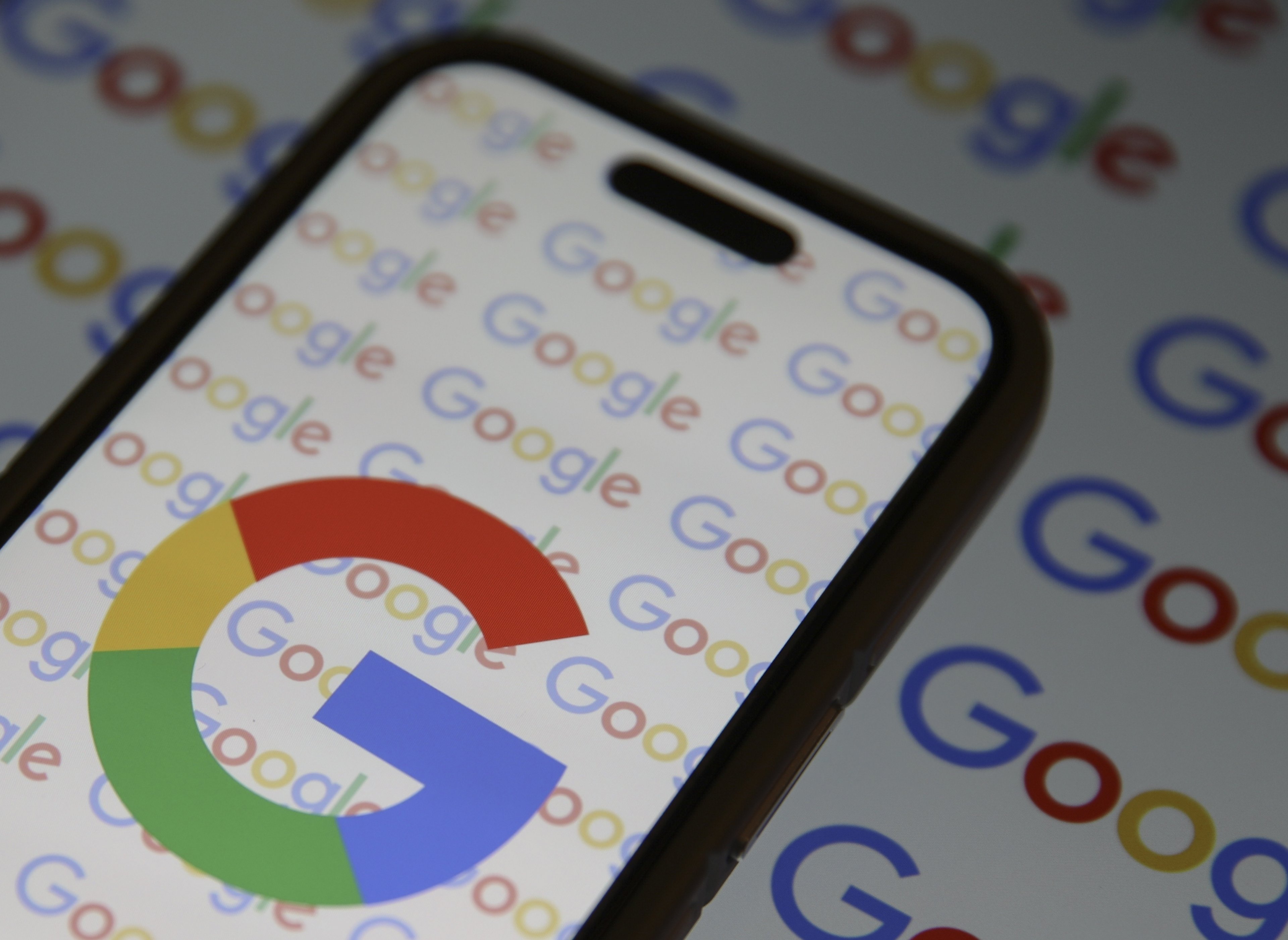You didn't think Google (GOOG 0.71%) would be satisfied with a place in your pocket, did you? The world's dominant search engine has displayed an impressive proclivity for the big breakthrough in recent years, but until it announced its acquisition of Boston Dynamics this weekend, it was hard to say just what Big G's long-range strategy might be. Now we know. Google wants to rule the world. It began with a search engine, but it won't stop until the world runs on Google's technology. Here's the five-step plan that Larry and Sergey just put together that will take it from garage start-up wunderkinds to the architects of the most ambitious scheme for global corporate dominance since the days of Standard Oil.
Step one: Control the flow of information
Google began as the outgrowth of a project by Stanford grad students Larry Page and Sergey Brin to -- what else? -- improve the search for information.
Since the company's founding in 1998, it quickly grabbed the top spot in global search and hasn't let go since. Today, the company's proprietary technology serves up more than a billion searches in 146 languages every day. The shift from PCs to mobile devices has actually helped Google in search, as its global search engine market share is a staggering 90% in mobile, compared with 70% on PCs, according to NetMarketShare.
What this amounts to is an iron grip on the flow of information around the world -- we search online to get information, after all. Google's ancillary services, from Gmail to Maps to YouTube to the Play Store on Android, all provide finer-grained access to specific types of information, and that only gives Google more control over our lives.

Source: Cory Doctorow via Flickr.
If Google disappeared tomorrow, you could still access information through Microsoft's (MSFT 0.48%) Bing. You could use Hotmail and Bing's mapping feature. But if these options were genuinely superior to Google's offerings, we would be using them. The switching costs for search engines are fairly low, after all. Google knows it has to be objectively better at giving the world access to the information it wants, because without that trust, it can't use the data all this searching generates to improve the next step of its grand plan.
Step two: Control access to information
A search engine is simply a gateway to information, but the hardware you search from is the gatekeeper. To this extent, Google's already produced by far the world's most popular mobile operating system, as Android claimed 81% of the global smartphone market in the second quarter of 2013. Android has also surpassed Windows to become the most-used operating system on any computing platform. That kind of dominance can be very hard to break, as Apple once realized in the 1980s as Microsoft-loaded PCs came to control the industry.
But Google isn't stopping there. Its Glass head-worn computers are the next logical step in the miniaturization race, putting the computer right in front of you all the time. No other company is close to a consumer model of this sort of device, which many industry insiders expect to be released to the public at some point in early 2014. That's months away at most, and even if it takes months longer, Google's already benefited enormously from Glass' high-profile beta program (which cleverly brands its users as "Explorers" while sticking them with a hefty price tag), which has given it a wealth of data on how people will use these products in the real world. Calibrating a head-worn computer involves radically different considerations from building a smartphone operating system, and Google's simply far ahead of the pack on this count.

Source: Michael Praetorius via Flickr.
Computers are ultimately conduits of information, and Google Glass will allow that information to flow in a way that human beings will have to adapt to as a sort of technological second skin. Imagine taking a part of your brain out when you get tired -- that's what users of a fully mature Glass device, running all the associated helpful apps we haven't yet seen, will feel like when they take it off. People are fiercely loyal to their iPhones, but they'll be fanatical about Glass, which will put everything you need where you need it as you go about your day. And one day in the not-too-far future, you might wind up using your Glass to hail a Google Cab, running the latest self-driving software.
Step three: Control the transportation network
Controlling information was the easy part, relatively speaking. But Google can't truly rule the world if all it does is rule the online part of it. The self-driving car is a major step forward -- controlling the underlying technology of our transportation network gives Big G control of the flow of people goods from one place to another. While we might use Google Maps to get from here to there, most of us aren't spending that driving time surfing the Internet or looking up new information with Google's search engine. All our time on the roads really adds up, too -- sitting in traffic alone wastes an estimated 5.5 billion hours a year for American commuters (that's nearly 18 hours wasted for every single person in the country), and the average commuter burns up more than 100 hours a year getting from place to place.

Source: Zack Sheppard via Flickr.
Much of our wasted time in traffic is the result of human error. Accidents are almost entirely the result of driver mistakes, and that adds up to millions and millions of crashes every year around the world. Even our response to these accidents causes more wasted time on the road -- when one person slows down to gawk at something, it causes a "standing wave" that eventually affects drivers hundreds or thousands of vehicles behind, as driver after driver has to slow down in turn to compensate. Eliminating the human weak point in the transportation network would likely save the world trillions of dollars in productivity and health-care costs every year. What would you do with all that extra time afforded by an automated commute? You might just wind up on Google, searching for more information. Once a Google-enabled driverless transportation network takes hold, Google will have its hands on three vital parts of our daily lives, but millions of us will still be stuck doing menial tasks once our driverless cars get us where we need to be. That's where Google's latest acquisition comes in.
Step four: Control the market for physical labor
Boston Dynamics has developed a reputation as the creators of some of the most advanced robots on the planet. Its four-legged 'bots have been developed as pack mules for the military, and its PETMAN bipedal 'bot has gotten so eerily accurate at mimicking human movements that you could set its cocky walk to "Stayin' Alive" and be hard-pressed to tell it from John Travolta:
Of course, no one's really afraid that a robot will come along and steal his or her job on the basis of its epic walking skills (except maybe John Travolta). But it's important to note that creating a robot that can successfully navigate uneven terrain, as Boston Dynamics' four-legged Big Dog already has and as biped 'bots will in short order, is a really big deal in the robotics world. Conquering difficult, variable challenges like walking is only the beginning, though. Imagine a world where Google's self-driving cars pull up to your house and a robotic deliveryman steps out of the back with your package. Or imagine a world where your tasty hamburger is prepared by a robot that knows how to put it on the grill, wrap it up in a package, and hand it to you when it's done. The mastery of complex motor skills involving a number of variables will transform robotics from a field that's largely been focused on the assembly line to one that can operate in the world in ways similar to human beings. That's where Boston Dynamics thrives, which should highlight the importance of this acquisition for Google.
As more manual work is taken over by robots, human beings will wind up spending more time on mental work, which is just the sort of work in which Google thrives. Since much of the robotic workforce that will have to arise as humans move further into knowledge work may well be operating on Google hardware and software, Big G will have itself firmly embedded in the world's economic infrastructure, its autonomous systems picking up the slack, from the warehouse to the freeway and from there to your door.
Step five: Control the mysteries of life itself
A couple of months ago, Google announced the creation of Calico, a subsidiary to be run by the former CEO of Genentech and which boasts the not-at-all-modest goal of tackling "the challenge of aging." The press immediately leapt on it as Google's immortality project, which might not be too far from the truth -- Larry Page is a proponent of "10x" thinking, which pushes him and the rest of Google to create products and solutions that are 10 times better than what's already available. Immortality would be beyond a "10x" improvement in human longevity, but a 150-year lifespan could be possible. In fact, it could already be a reality, as gerontologist Aubrey de Grey claims that the first person to live to 150 is alive today. He also claims that the first person to live to 1,000 could be born by the end of the 2030s.
Google would probably be able to implement head-worn computing, driverless cars, and a robotic workforce before it could deploy something that would allow the average person to live to a hale and hearty 150 or beyond. But all of those ambitions pale in comparison with solving the eternal problem of aging. With this solution in hand, Google could control not only your access to information, but also the amount of time you have on Earth to access it.
Google might never reach this goal, but imagine for a moment that it does. Imagine a world of knowledge workers, living forever within the protective hold of Google's technology. Is that Larry and Sergey's dream? What might the world look like if they make it real?







